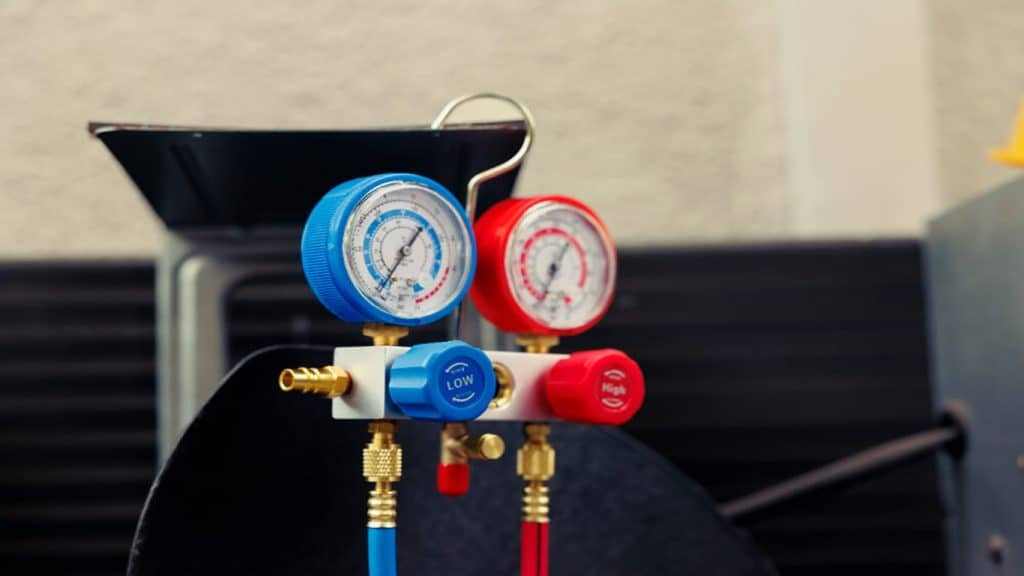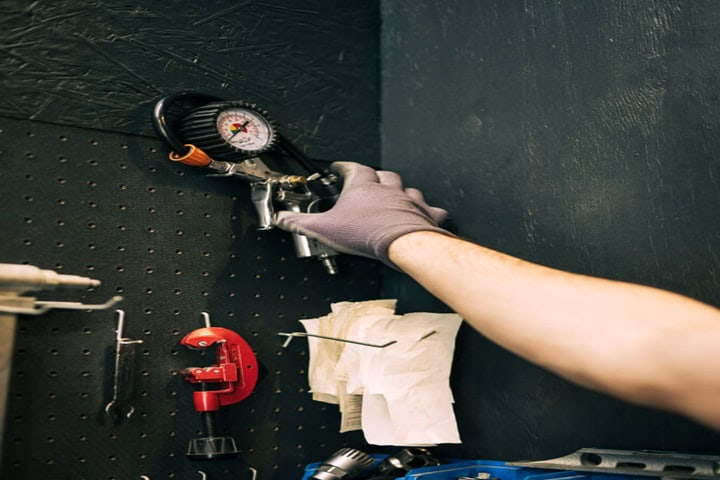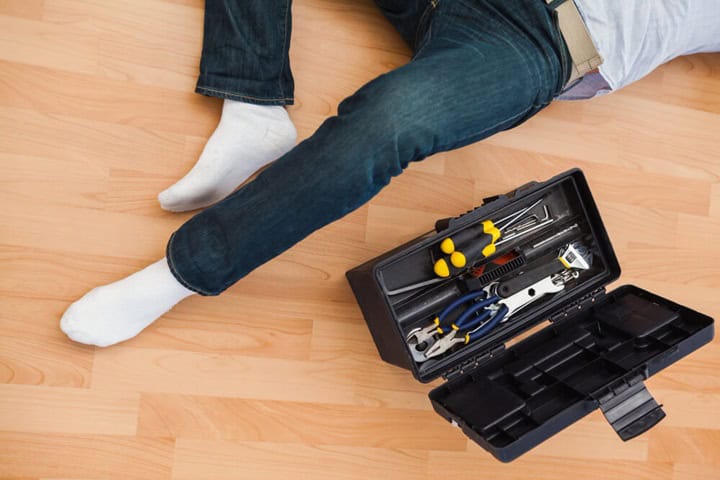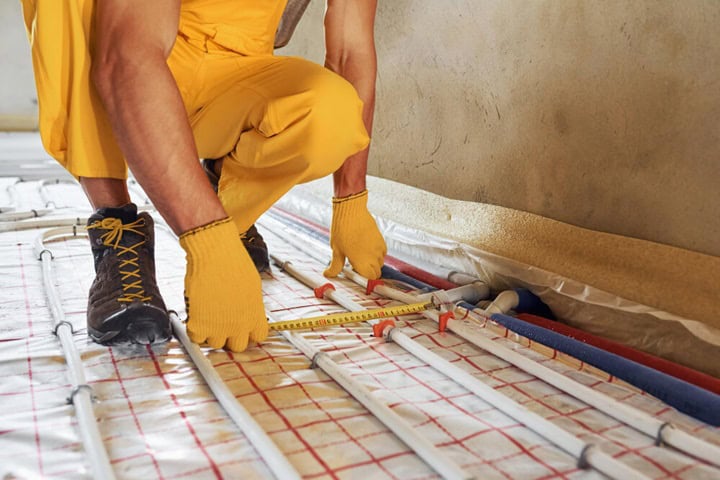
Keep your toes toasty and your energy bills low. Discover the essential maintenance trick for your underfloor heating system.
Underfloor heating is an efficient method to warm your home, but it requires occasional maintenance to function at its best. Bleeding the system ensures that hot water flows unimpeded by air blocks. In this article, we will discuss how to bleed underfloor heating, with detailed advice for both homeowners and DIY experts, so that you can successfully identify common underfloor heating problems and bleed underfloor heating, should there be trapped air bubbles within the pipes.
Key Points:
- Recognise when your underfloor heating system needs bleeding.
- Understand the necessary tools and materials.
- Follow a step-by-step guide to effectively bleed underfloor heating, including what should be done before, during, and after.
- Learn troubleshooting tips for persistent issues.
- Maintain pressure and performance after bleeding underfloor heating.
Encountering trouble with your underfloor heating and not sure what to do? Contact us today and speak to the experts.
Expert Advice Regarding Bleeding Underfloor Heating
Bleeding your underfloor heating system is a critical maintenance step to ensure better performance and efficiency for wet underfloor heating, as well as electric underfloor heating.
Here’s everything you need to know to get started.
Tools and Materials Needed

Before you begin the process of bleeding your underfloor heating, ensure you have the necessary tools on hand:
- Screwdriver or bleed key: Specific to your system type.
- Bucket or towel: To catch any escaping water.
- Pressure gauge: To monitor the system’s pressure, often integrated into your setup.
- Replacement water: Have some on hand if you need to refill the system.
How Does Bleeding Underfloor Heating Work?
Underfloor heating systems require a network of water pipes laid beneath your floor to distribute heat evenly. When these pipes have air pockets, the system’s efficiency can be significantly reduced, manifesting as uneven heating or even no heat output in extreme cases.
When to Bleed Underfloor Heating Systems
Bleeding underfloor heating isn’t always necessary but is crucial when you notice certain signs, especially if considering if underfloor heating needs servicing:
- Strange noises: Hissing, gurgling, or bubbling sounds from the pipes indicate trapped air.
- Uneven heating: Some floor areas may feel warmer than others.
- Lack of heat: A clear sign that your system may need bleeding, especially if no heat is emanating from the floor.
Common Causes of Air in Underfloor Heating Pipes
Air can become trapped in your underfloor heating system due to several reasons:
- Installation issues: Improper setup can leave air pockets that disrupt flow.
- Leaks: Small leaks can introduce air into the system over time.
How to Bleed Underfloor Heating System: Prepping

Before you start the process of bleeding your underfloor heating, it’s important to perform some preliminary checks to ensure the system is properly prepared and safe to work on.
Initial System Checks
- Check System Pressure: Observe the pressure gauge readings. Normal fluctuations indicate a healthy system. However, consistently low pressure may signal leaks or blockages that need addressing before proceeding.
- Add Water if Necessary: If the pressure is low, carefully add water to the water underfloor heating system to bring it up to the recommended level. Monitor any adjustments closely to avoid overfilling.
- Inspect Air Bleed Valves: Locate and inspect the air bleed valves, usually found on the manifold. This is crucial to identify where air might be trapped within the system.
Solving the Problem of Air in Underfloor Heating
Air trapped in the system can significantly reduce heating efficiency. Here’s how to effectively remove it.
Bleeding the System
- Fill and Wait: Ensure the system is full of water. Wait for about ten minutes after filling before you start venting; this helps prevent air from being sucked back into the system.
- Vent System Gradually: Begin at the lowest point of your property and methodically work your way to the highest point. Vent each valve individually to ensure all air is expelled.
- Manage Spillage: Have a towel or cloth handy to deal with any water that escapes.
- Drain and Reflush: After venting each valve, drain any waste water. Then, flush out the system to ensure all debris and air have been cleared.
- Repeat as Needed: Go through the venting process for each valve until you’re confident all air has been removed from the system.
What to Do After Bleeding Underfloor Heating

Once you’ve completed the bleeding underfloor heating process, a few additional steps will help maintain the system’s performance moving forward:
- Flush the Manifold: Attach a hose to the top underfloor heating manifold and open the drain valve at the lowest point. Flush each loop to ensure the system is completely clear.
- Recheck Pressure: After all operations are complete, recheck the pressure. Adjust it if necessary to ensure it falls within the optimal range.
- Visual Inspections: Regularly check around valves and manifolds for leaks or loose connections.
- Monitor Water Pressure: Keep an eye on the pressure, especially during colder months when the system works harder.
- System Functionality: Check for balanced heating across each room that the system is integrated into within the home, including if you have set up multi-heating zones. Look for cold spots that might indicate issues.
- Thermostat Settings: Ensure your thermostat is correctly set for your needs. Consider upgrading to a smart thermostat for improved control and efficiency.
- Floor Conditions: Keep the floor surface clean and uncluttered to facilitate better heat transfer.
- Energy Usage: Monitor your energy consumption. Unexpected spikes could indicate underlying system issues.
Do You Need To Bleed Electric Underfloor Heating Systems?
No, bleeding underfloor heating is not applicable to electric underfloor heating systems. Unlike their wet counterparts, electric underfloor heating does not use a network of water pipes, meaning there are no fluids or air to bleed out. This distinction is crucial because it affects the type of maintenance required.
Though bleeding is unnecessary, electric underfloor heating systems can still experience performance issues. Inefficiencies typically arise from problems with the electrical wiring or the heating mats themselves. If certain areas of your floor remain cold while others heat up, it might indicate a malfunction in these components.
For these complex issues, it is advisable to consult a professional at Underfloor Heating Trade Supplies. This ensures that any underlying problems are addressed safely and effectively, maintaining the performance of your heating system. For further details regarding electric underfloor heating, try these articles:
Bleed Underfloor Heating for Long Term Efficiency
In conclusion, you should know how to bleed underfloor heating as part of your annual (and occasionally monthly) checks when maintaining your underfloor heating system to prevent long term faults. Whether you’re checking system pressure, venting air from valves, or maintaining regular system checks, each step helps to maintain the performance of your water-based underfloor heating system. Remember, electric underfloor systems don’t require bleeding but may still need professional attention for electrical issues. Regular maintenance ensures you can use underfloor heating efficiently for years to come.
Further reading:
Want to expand your knowledge further regarding underfloor heating maintenance? Here’s what our blog can offer you –
- How long does underfloor heating take to warm up
- What temperature should underfloor heating be set at
- How to turn off underfloor heating
For other insights regarding your heating, here’s what you need to know when to turn off your central heating.
FAQs
How to remove airlock from underfloor heating?
To remove an airlock in underfloor heating, increase the pump speed to its maximum setting to help push the air through the system. You can also manually bleed the system at the air vent valves to release trapped air.
How do you get air out of a floor heating system?
To get air out of a floor heating system, turn on the heating to circulate hot water and open the bleed valves located on the manifold to release air until only water comes out.
How often should you bleed underfloor heating?
Underfloor heating should be bled at least once a year or whenever you notice a decrease in heating efficiency or hear gurgling noises, which may indicate air build-up.
Sources
Cottrell, A., (2023) The exact date you should turn your heating off, according to boiler experts. Ideal Home. [online] Available at: https://www.idealhome.co.uk/news/when-should-you-turn-your-heating-off-269650 [accessed 09/12/2024]
